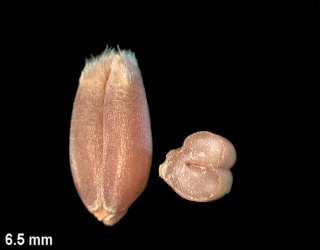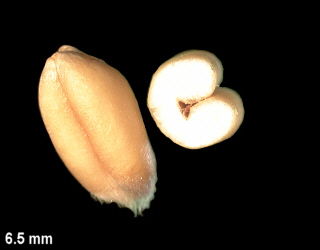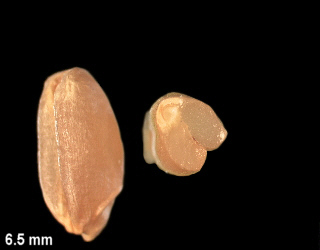| Agronomy
105's Weed ID |
|
|
Wheat
|
|
| Wheat,
an annual grass, is one of the world's three most important food grains
for human consumption. |

|
|
|
 |
Wheat
has a spike type inflorescence that is golden brown when ready for harvest.
Some wheat varieties have awns while others do not. The awns are
the long, thin structures that extend from the lemma and give the wheat
heads a bearded appearance. Most wheat grown in Indiana is of the
non-bearded or awnless type. |
|
|
| Wheat
can be identified from the other cereal grains by looking at the characteristic
auricles at the base of the leaf blade where it attaches to the leaf sheath.
Wheat is divided into several market classes depending upon its use. |
 |
|
|
 |
The
first of these classes is soft red winter wheat, which is the type of wheat
grown in Indiana. The seeds are barrel shaped and a tan color, which
is lighter than the color of hard red winter wheat. This type of
wheat is used primarily for general purpose baking flour and for such things
as cookies and cake mixes. |
|
|
| Hard
red winter wheat is grown to our west and is used primarily for bread.
The seeds are longer, narrower, and darker than soft red winter wheat. |
 |
|
|
 |
White
wheat is grown in the Pacific northwest, Michigan and New York. This
type of wheat is the lightest in color of the wheat seeds you will learn.
It is used in products such as saltine crackers that require a very light
colored flour. |
|
|
| Durum
wheat is grown in the Dakotas and in Canada. It is the hardest and
longest of the wheats you will learn. It is used primarily in spaghetti,
macaroni and other similar products. |
 |













